Social Media Account Gives Netizens A World Tour Of Dilapidated, Long-Forgotten Places
The social media initiative “Abandoned World” on Facebook showcases stunning vacant buildings in all of their deteriorating grandeur. It also demonstrates how decidedly different things appear when no one is around. And let us be clear about one point before we delve into all the stunning pictures: it’s not always permissible to enter deserted structures regardless of where you are.
In addition to all that, it can be pretty hazardous. Put your personal safety and well-being first. Be well-prepared always, never travel alone, and avoid taking foolish chances. Adventure is fun, but becoming trapped under debris is not.
So with that public service announcement in mind, delve ever so deep into man-made structures which sometimes look as if they were taken straight out of a fantasy novel.
All images in this article are courtesy of Abandoned World on Facebook.
Castle Stalker, Scotland
Castle Stalker is located close to the mouth of Loch Laich, 25 miles outside Oban on Scotland’s west coast. On a craggy islet named the Rock of the Cormorants, it is close to Loch Linnhe. Its Gaelic name, Stalcaire, translates to falconer or hunter.
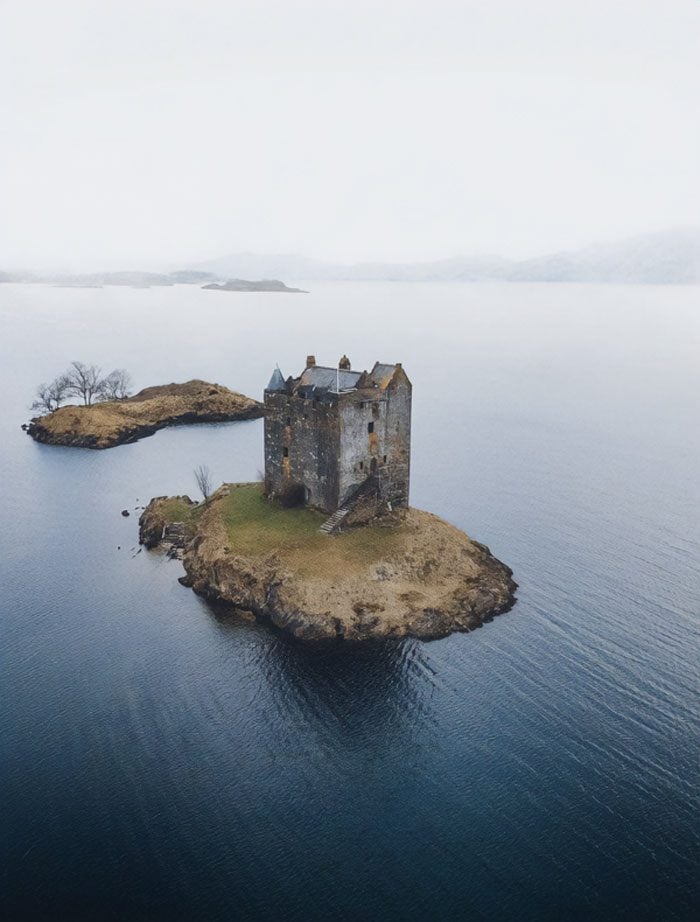
This place has a long record of bloodshed attached to it, most notably the death of its proprietors. Most of the proprietors have met violent ends, starting with Sir John Stewart, the Lord of Lorn, and ending with Duncan Stewart, the Governor of Sarawak.
An abandoned chateau in France
What you see here is a chateau in France that has long been neglected. In its heyday, the chateau would have looked amazing, to say the least. Plus, look at the statue that overlooks the chateau. It looks so life-like, doesn’t it?
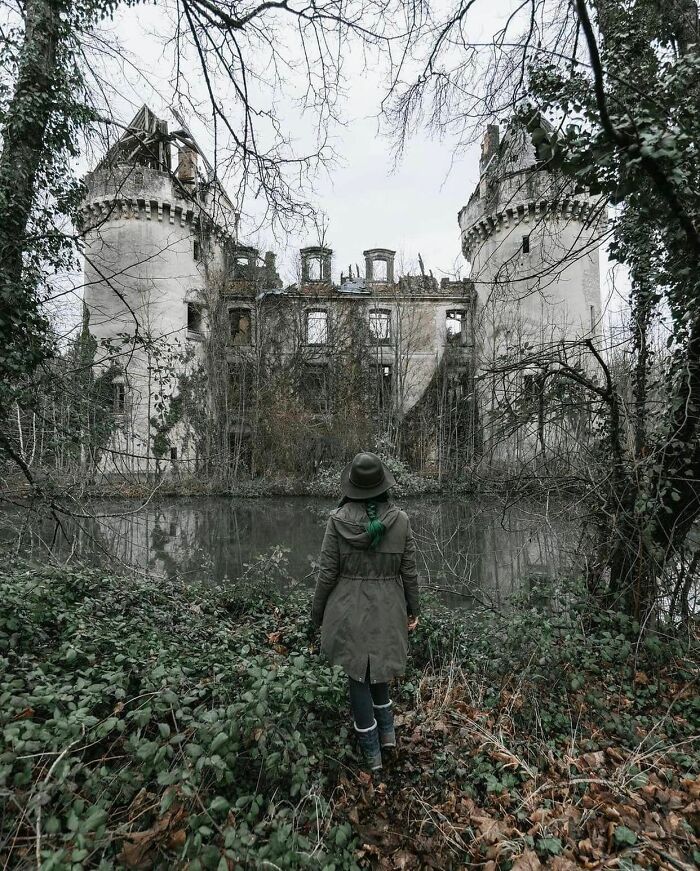
Wait a minute! That’s no statue – it’s a real human being. The editing and the outfit she is wearing blend so well with the surrounding she is in. Really sad to see a place like this gone to waste. What potential it could have had!
Carleton Island Villa, New York
On Carleton Island, in upstate New York, there is a derelict estate called Carleton Island Villa. William Miller, an architect, constructed the house in 1894 for William O. Wyckoff, who gained his money by assisting the Remington Arms Company in developing a typewriter.
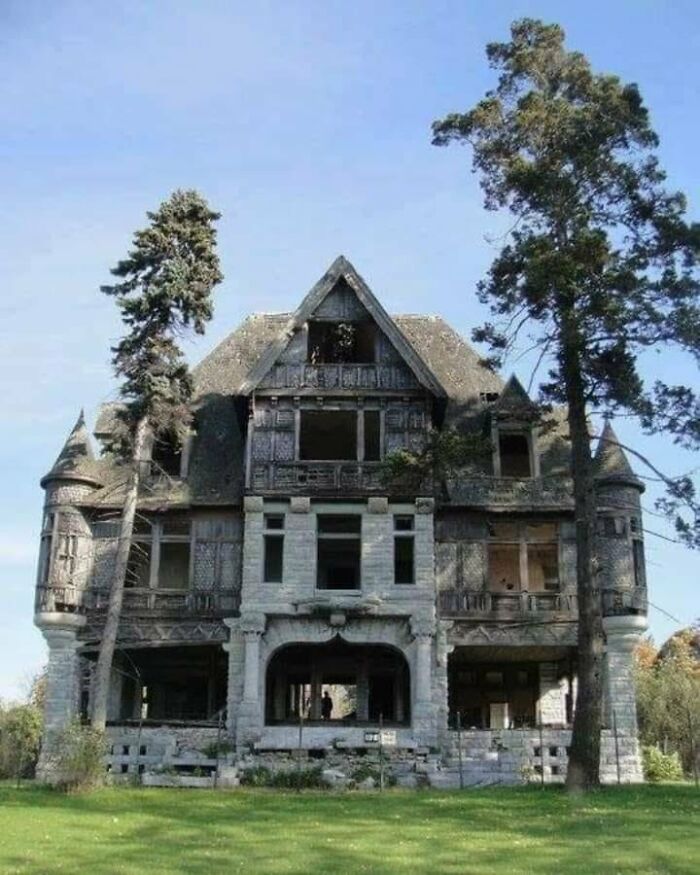
The island is located less than a mile from the Canadian border and on the St. Lawrence River. It was formerly owned by the Iroquois, and it wasn’t until 1721 that any European settlers began to take note of this place.
Collapsed bridge
Earthquake seems to be the most probable answer to this destruction. It must have destroyed one of the supports at the other end, which caused the collapse of the bridge. Or it could have been a flash flood, judging by the waterway.
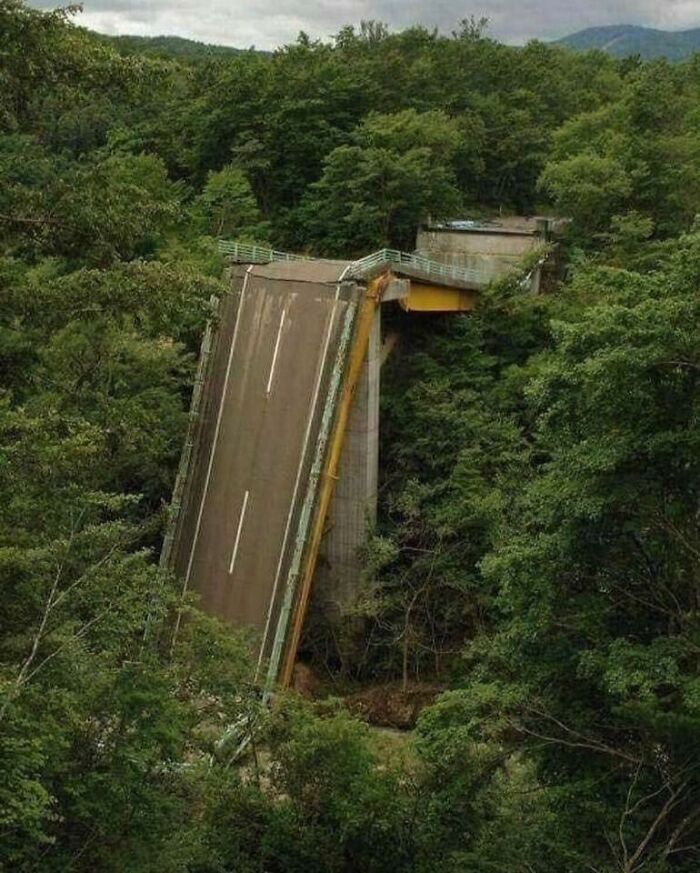
Now we want to move a bit towards the notion of a flash flood. Plus, the concrete support looks quite sub-standard and not strong enough to withstand unexpected natural events. If it had been thicker and more rounded like a tree trunk, it could have survived.
The Divine Lorraine Hotel, Pennsylvania
Among Philadelphia’s most opulent and well-preserved late 19th-century apartment complexes is the Lorraine Apartments. It was designed and constructed between 1892 and 1893 by architect Willis G. Hale. The Metropolitan Hotel Company bought the apartments in 1900.
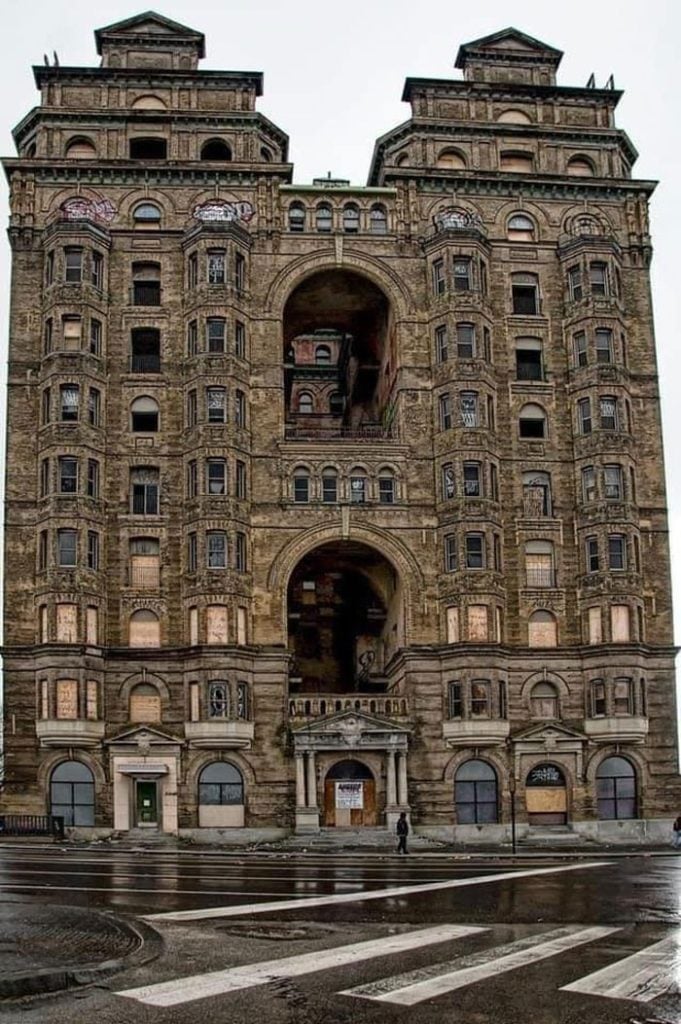
After the acquisition, the structure was renamed the Lorraine Hotel. The structure was purchased from the Metropolitan Hotel Company in 1948 by Father Divine, the founder and leader of the Divine Peace Mission Movement, who then renamed it the Divine Lorraine Hotel.
Maison de Sorciere, France
This wizened-looking house is called the “Maison de Sorciere,” which is also called ‘the witch’s house.’ ‘House of Sorcery’ would be a direct translation, and it fits right down to a tee. Just look at this place! Baba Yaga would love it here!
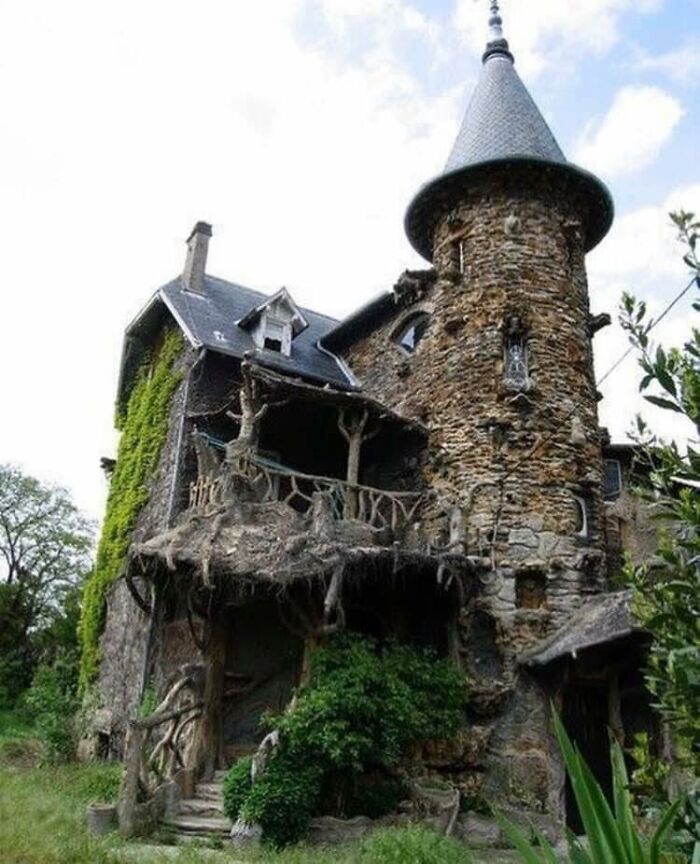
Yeah, we know that Baba Yaga lives on a hut that stands on a chicken leg, surrounded by a fence of skulls. No matter how traditional she would seem, even an eldritch being has to change with the tide of times!
The red telephone box
Giles Gilbert Scott won a design challenge in 1924 and went on to create the distinctive red phone box that would be recognized throughout the world today. The K2 (as it is referred to in the media) was already going to die soon.
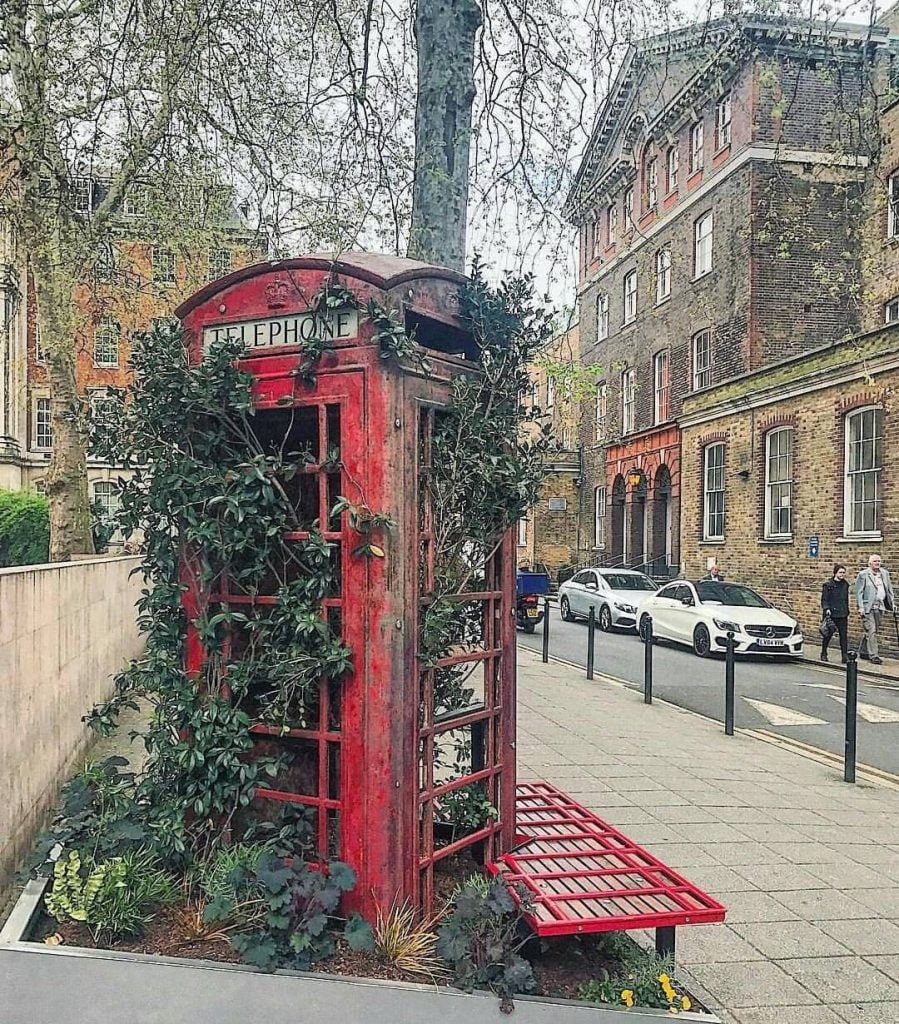
When they were first officially conceived, the general public considered them to be ugly. Perhaps because he based the design on Sir John Sloane’s tomb for his late wife, which was built in 1815. But now, it is as synonymous with English identity just like the double-decker bus.
Idyllic Introvert Getaway
Now would you look at this place right here? This is an introvert’s wet dream. Only one narrow wooden bridge connects the property to the mainland. If the owner doesn’t want that, they can just blow it up and be done with it.
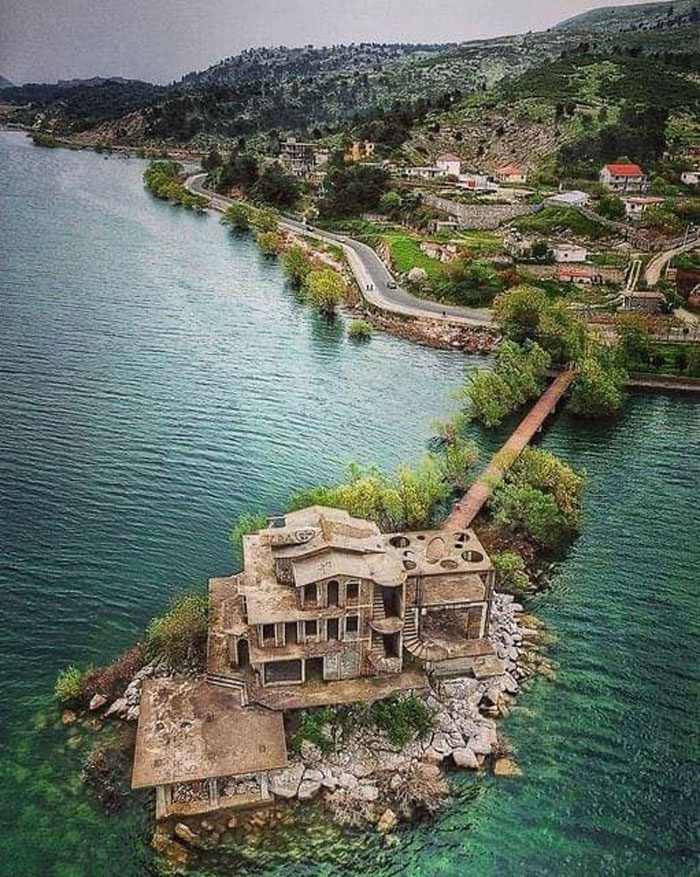
You know, like in that movie, The Bridge on the River Kwai. Plus, this will also be an ideal place to wait out a zombie apocalypse. Unless these are the kind of zombies that have the mental capacity to stay buoyant, you’ll be safe here.
The Swinger’s Tiki Palace, Tennessee
The Swinger’s Tiki Palace, perched on Missionary Ridge facing Chattanooga, was first imagined as Billy Hull’s dream residence, a well-known strip club proprietor. The Castaways Club and the Lion’s Den, which were located adjacent to one another, were owned by Hull.
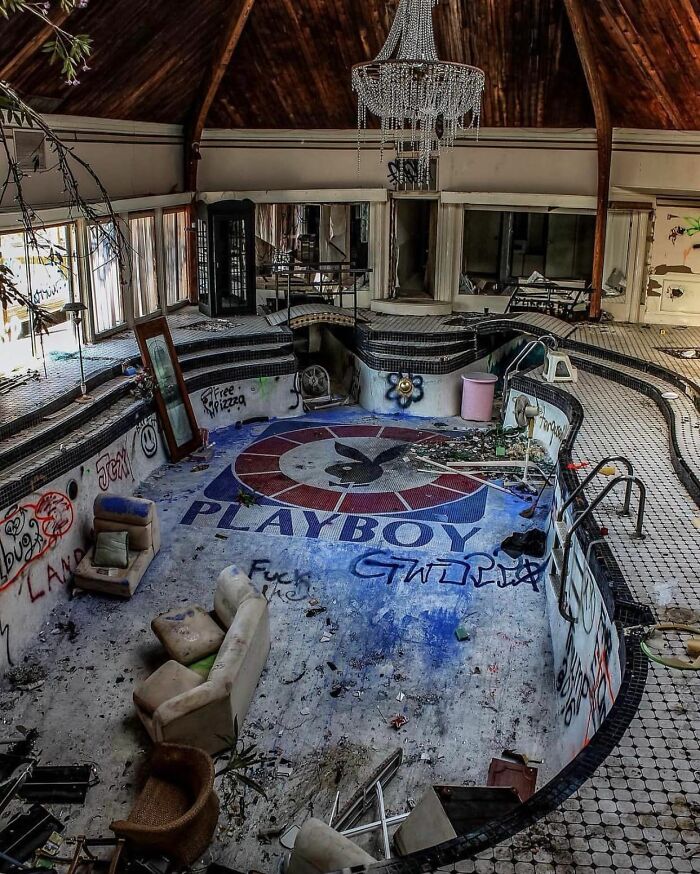
In Chattanooga, Tennessee, architect Ed Ball started construction on the most beautiful mansion following two years of research. The excitement increased since this property required 14 months to build. Eventually, the open house was visited by nearly 10,000 people in 1972.
Abandoned house, USA
We have to say that this would be the first time we see a house that leans backward instead of forward. Quite obvious that whoever designed this house did not take into account the soil integrity and the lay of the land.
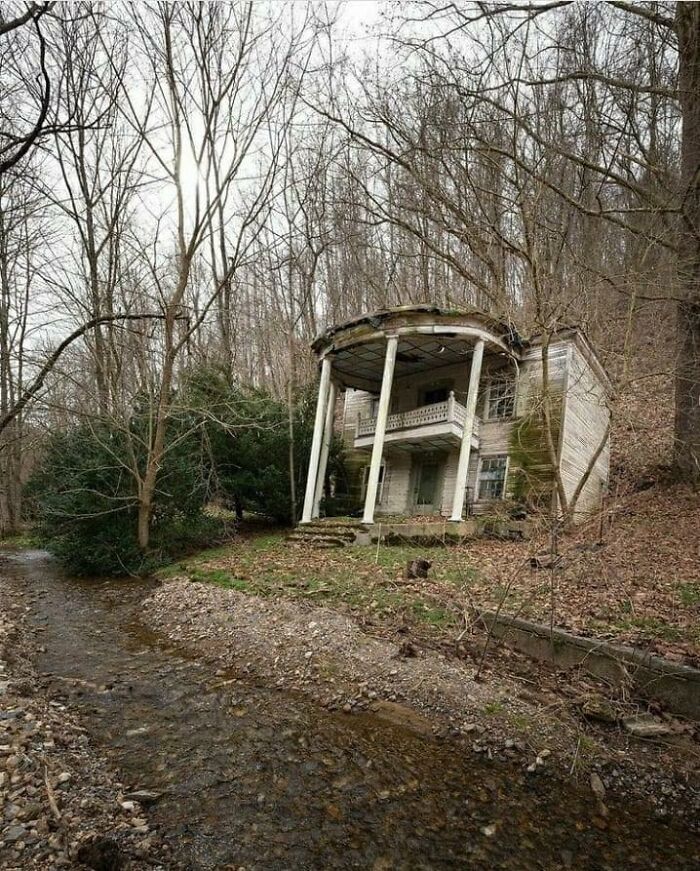
If they did, something like this would not have happened. Just look at the place. That’s a million-dollar house anywhere else in the country with comparatively high real estate rates. A house is a significant investment so consider every single aspect before investing in one.
The Minister’s Treehouse, Tennessee
This chapel and treehouse, noted as Horace Burgess’ Treehouse, was established in Crossville, Tennessee, in the United States. Beginning in 1993, Burgess primarily did the work, and claims that God gave him the instructions to construct a treehouse in a revelation.
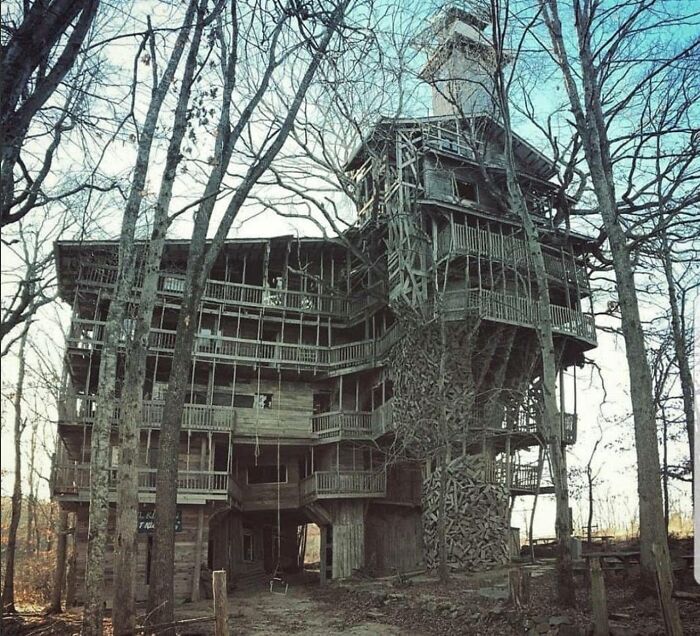
It earned the unofficial title of the largest tree home in the world and quickly gained popularity as a local attraction. On August 30, 2012, the state ordered it to be shut down due to fire code violations. The tree house fully burned down just a few years ago.
Abandoned Russian house
Have you ever wondered what those onion-shaped domes mean, especially the ones on top of Russian churches? Three-domed churches represent the Holy Trinity; five-domed churches represent Christ and the Four Evangelists; thirteen-domed churches are typically devoted to Christ and the Apostles.
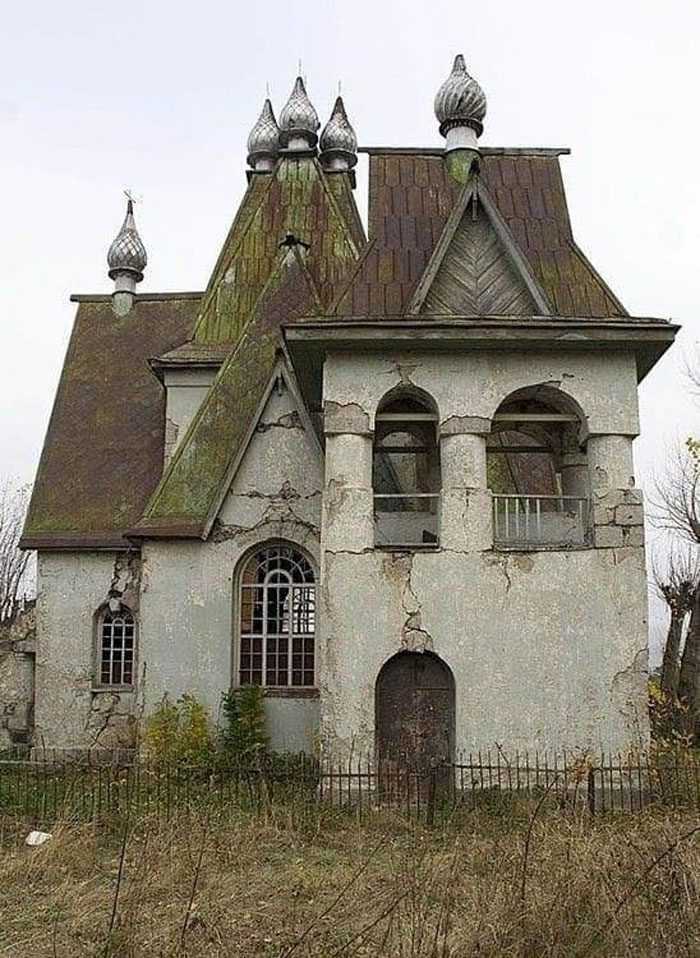
However, not all church domes are shaped like an onion. Long used extensively in Russian church design, “helmet domes” got their name from their resemblance to the bogatyrs‘ helmets. Yeah, we know that this is a home, but we wonder what the five domes mean.
Maison de Jeanne, Aveyron, France
Among the oldest homes in Aveyron, France, is the “Maison de Jeanne” (also known as “Jeanne’s House”), which is situated at 10 Rue de la Rue Belvezet in Sévérac-le-Château. This medieval home in Aveyron, France, was constructed sometime in the fourteenth century. Believe it or not, it’s still occupied.
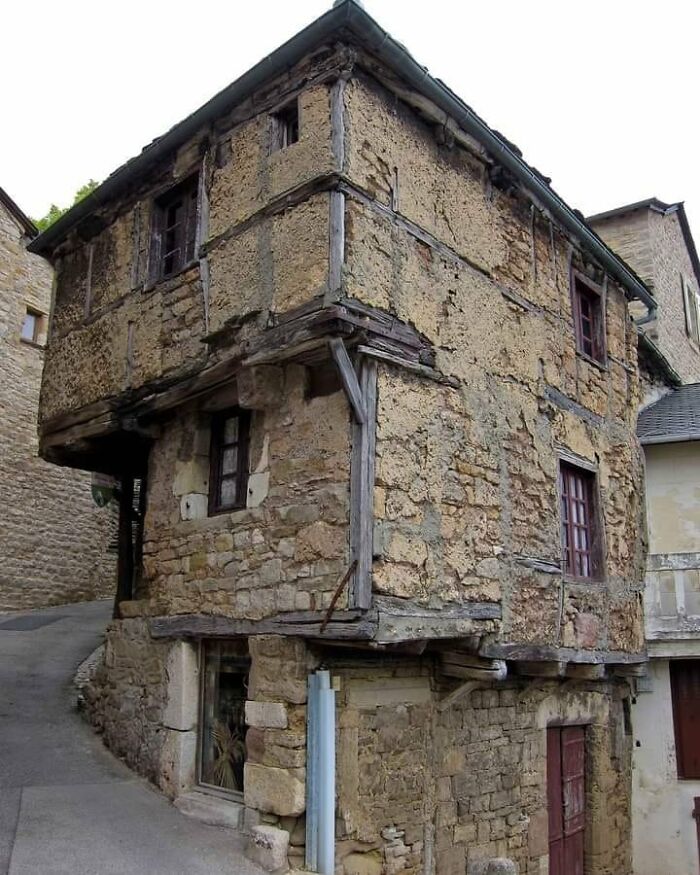
You might be asking why the higher floors are significantly larger than the base floor, given the building’s distinctive and lovely facade. They were only liable to pay taxes on the floor area of the ground floor throughout that century; the upper stories were exempt.
Abandoned house, USA
Shame that this place was abandoned. Just look at it. We wonder who would be daring, mad, and rich enough to flip this one. If properly done, this neoclassical piece of architecture would look like the belle of the ball. That’s a fact.
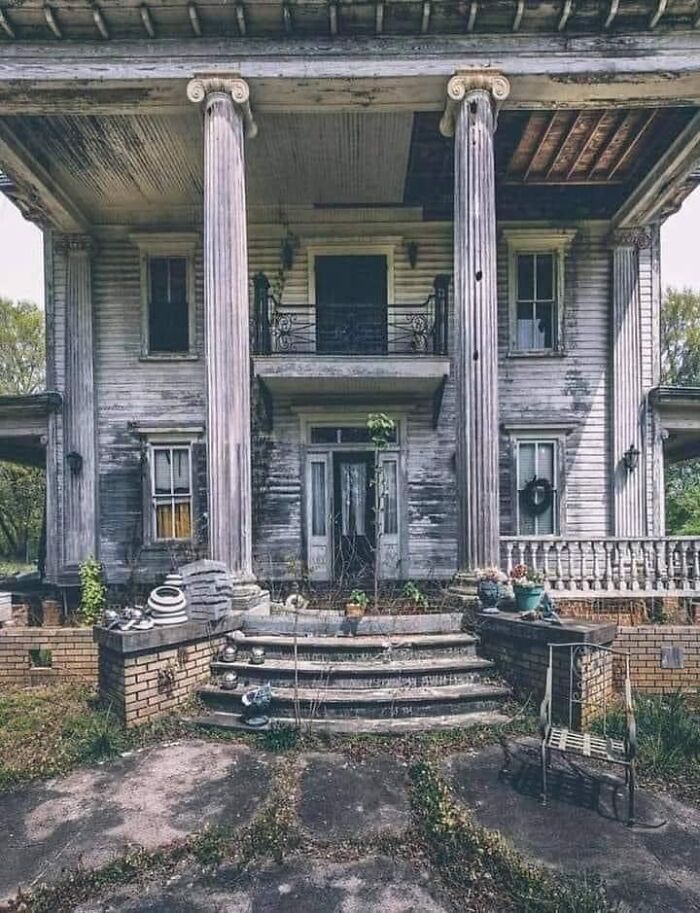
But it would be better to dig a bit deeper to find out what caused this place to be abandoned. Hauntings? Considering the track record of the States, it could be a strong possibility. No one wants an Amityville situation in their hands.
Bannerman Island, New York
Pollepel, now more often known as Bannerman Island, is a little gem in the Hudson Highlands landscape. It used to be an uninhabited island that could only be reached by boat, but some Indian tribes believed it to be haunted.
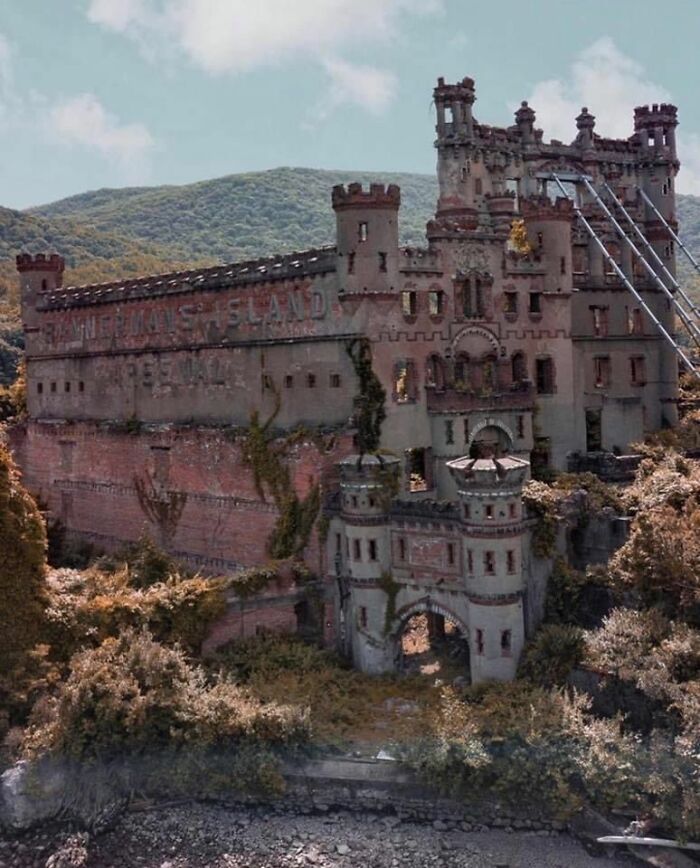
People fleeing those tribes sought sanctuary there. Many fantastical stories are based on such superstitions, and many others were propagated by later Dutch mariners. All the weapons and ammunition that remained from the Spanish War were stored here by its previous owners, the Bannermans.
Prop or the real thing?
Looks more like a prop rather than a genuinely abandoned stagecoach. What are the odds of one stagecoach surviving close to 100-plus years of exposure to natural elements like rain, sun rays, and others? Well, if it was made of sturdy materials, then that’s a possibility.

That would not be the case for mass-made stagecoaches such as this one. Why spend capital looking into every single nuance and outcome when you can use the standard products and increase production? Because that’s how you turn a profit! So, yeah, odds are this is just a prop.
Castle Sinclair Girnigoe, Scotland
Castle Sinclair Girnigoe is a collection of abandoned stone buildings. It was constructed and altered across a 200-year span by the Sinclair earls of Caithness. They were, in antiquity, one of the most influential houses in northern Scotland. Circa 1470 saw the construction of Girnigoe Castle.
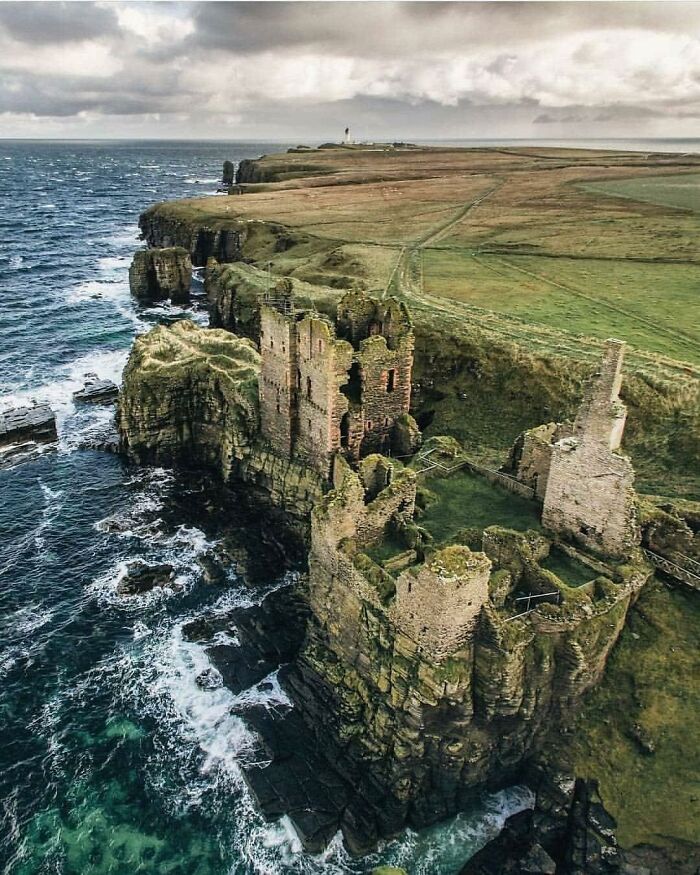
It continued to grow until the early seventeenth century, after which it was christened ‘Sinclair.’ Current digs and analysis suggest that the structure was actually a single castle with subsequent expansions rather than the two independent strongholds that were formerly believed to exist there.
Cerro del Borrego Eco Park, Mexico
These don’t look abandoned. Unkempt, maybe. But since this happens to be inside an Eco Park, leaf litter can be expected to a certain limit. Plus, the vibe here looks really spooky. The weather does an excellent job of highlighting the gloom.
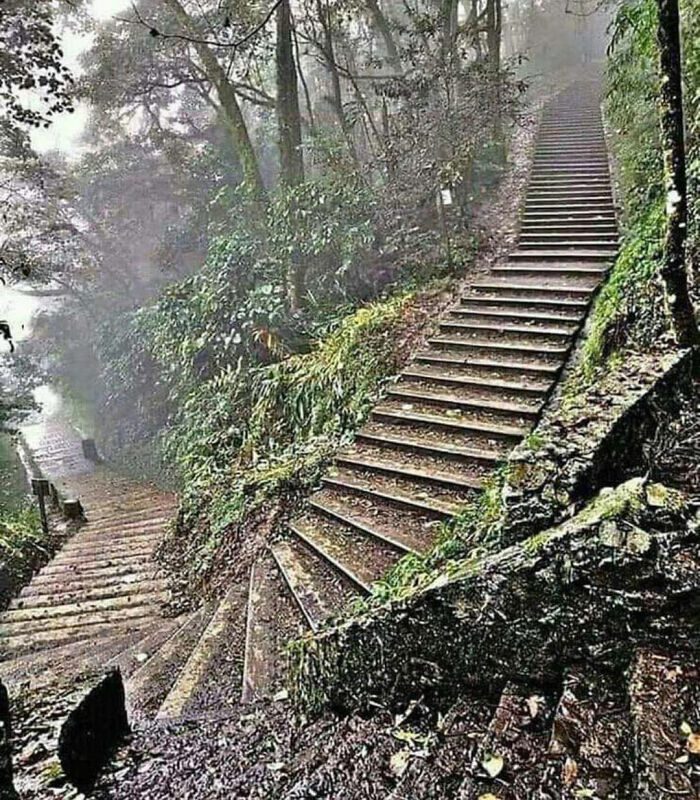
It looks like a great workout place if you are on a mission to add in those steps. Your legs and all your muscles will be crying for rest, but properly done, it can strengthen them over time. Plus, it is always great to immerse yourself in nature!
(Abandoned?) Mansion, Poland
What you see here is an abandoned mansion in Poland. But by the looks of the tracks on the ground, it seems far from being abandoned. Wait, our Enid Blyton senses are tingling! What could be going on over here?
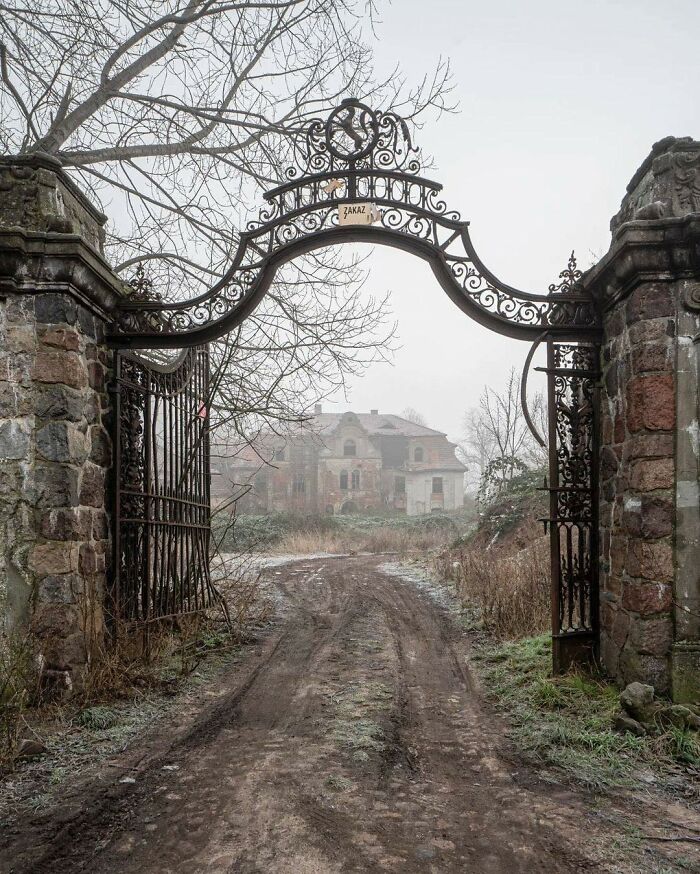
Since this mansion is in Poland, it could be a modern-day meeting place for witchers. Sure, their kind was heading towards extinction in the novels, but who knows? Maybe some survived. At the end of the day, Geralt and Yennefer can be quite resourceful when needed.
Château de Gudanes, France
Château de Gudanes was formerly a fortification built in the 1200s, a castle built in the 1400s, and finally, a sumptuous château built in the 1700s. It still stands tall in the south of France. Ange-Jacques Gabriel, a Parisian architect, created this beauty.
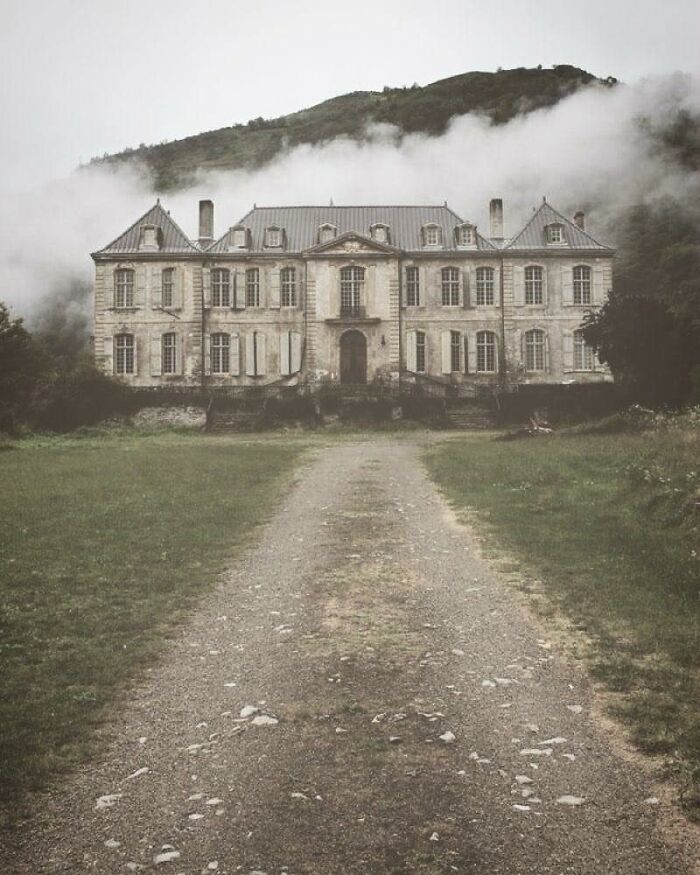
It holds the very same classification as the Palace of Versailles and also the Eiffel Tower. One of the most celebrated French architects in history is Gabriel. His other major architectural accomplishments are the Place de la Concorde in Paris and Marie Antoinette’s Petit Trianon and Opera House.
Schloss Kranichfeld, Germany
The palatial complex was built as a medieval fortification to guard the Ilm Valley’s trade networks. Still, it retains the divide into the central courtyard as well as the outer courtyard, even today. There is still a castle there, as well as the remains of a fortification.
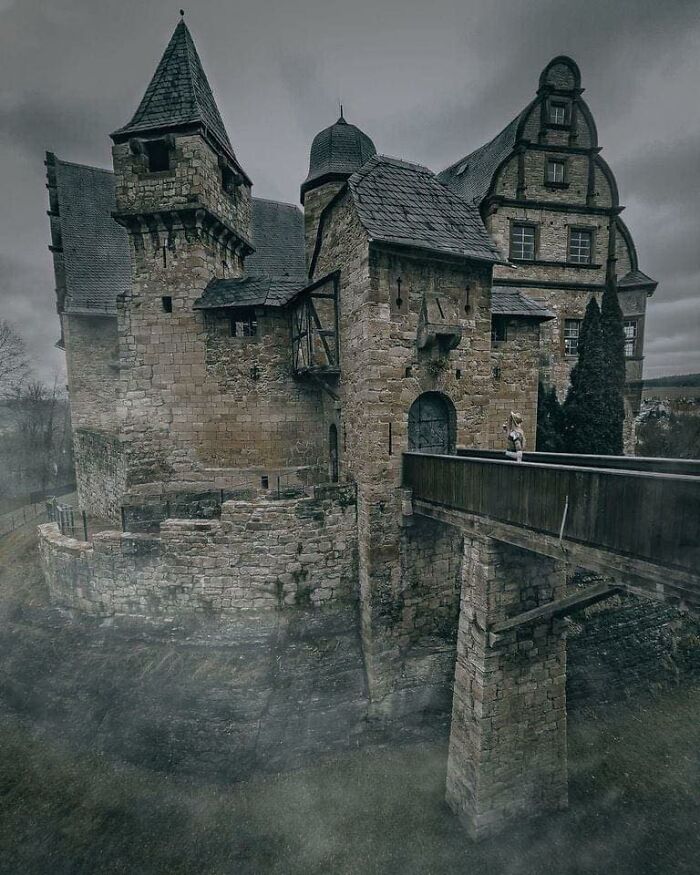
It is encircled by a circular wall that has been mostly intact. Their residence is a 16th-century reconstruction of a Romanesque-style edifice. Since 2002, visitors can use the 27-meter-tall stronghold, popularly referred to as the “Fat Tower,” as a viewing platform.
Rails at Lake Tahoe
Since the early 1900s, such rails have been used to deploy boats to Lake Tahoe via their storage sites onshore instead of serving as railroad tracks. The elite required a solution that would keep their vessels safe while they were not in the lake.
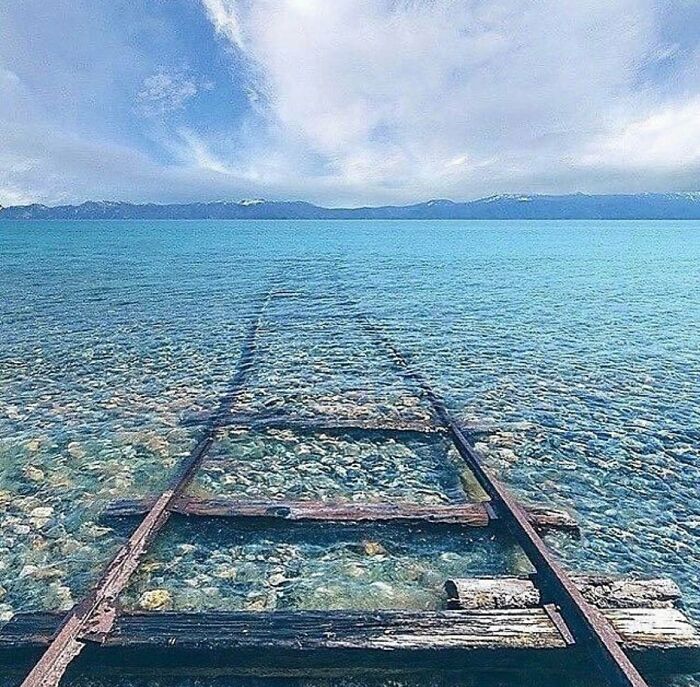
In order to survive the cold winter period, they started to establish and construct holiday homes in the Tahoe regions in the 20th century. To accommodate the vessels, they constructed enormous facilities, and then they would carry them into the water using rails.
Dean Village, Scotland
Tourists can still observe the remnants of the milling water mills that once did take place in Dean Village. You can find several mill stones as well as stone plaques that have been embellished with baked products throughout the village.

If you continue along the Water of Leith promenade, you could also find the Dean Bridge there. Thomas Telford was the architect of both The Bridge and St. Bernard’s Well. The British isles are known for their rainy days but this sky seems a bit farfetched!
Wreck of the ten sails, Grand Cayman
According to legend, ten merchant vessels washed up in November 1794 off the coastline of the East End on a barrier reef. Despite not losing a single life in the accident, the islanders gave up their lives to safeguard every one of the crews throughout this violent storm.

One of the individuals saved is rumored to have been a royal relative of King George III. Some attribute his rescue to the fact that the Cayman Islands are a notorious tax haven, as a boon given by a gracious king.
Fathom Five National Marine Park, Canada
The wreckage of the Canadian schooner Sweepstakes, one of the most recognizable shipwrecks in continental North America, is located in Lake Huron. Something like 20 feet of water separates Sweepstakes from the mouth of Big Tub Harbor, where it is situated.
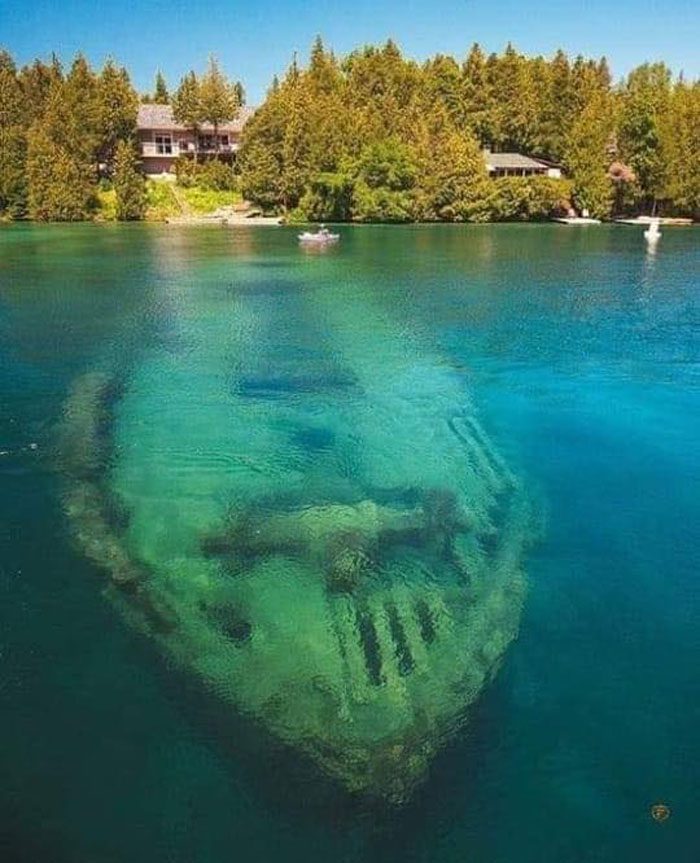
This schooner is among the most well-liked ruins inside the Fathom Five National Marine Park, which is located in Tobermory, Ontario. Explorers, scuba divers, plus tour boat tourists frequently visit this ruin. The schooner’s 119-foot-long hull, which sank in 1885, is almost entirely intact and that‘s impressive.
Airlie Monument, Scotland
Airlie, the 11th Earl, the grandfather of the current Earl, was killed on the battlefield during the Boer War, and thus the Airlie Monument was constructed in his honor. It aims to act as a reminder of a valiant and brave soldier.
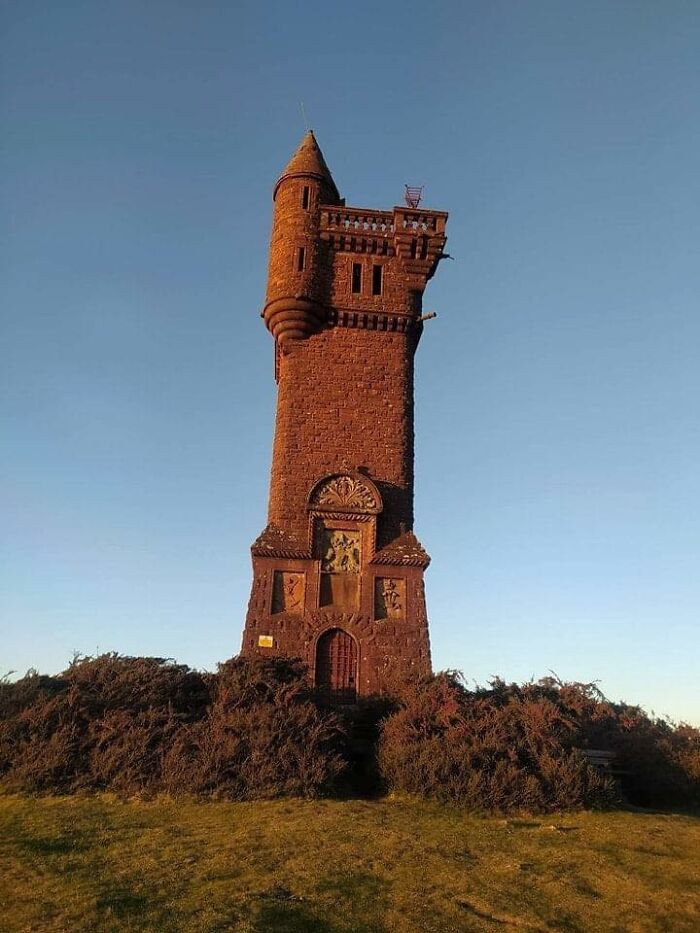
Throughout one remarkable career in the military, he earned respect and love of the local populace and the men he oversaw. It is a beloved feature of the skyline of Angus. It really looks smashing when you consider the aesthetic.
A mine in the San Juan Mountains, Colorado
Southwest Colorado would be the location of the San Juan Mountains. The hills, which span thirteen counties throughout the Centennial State, are renowned for having the greatest coverage area inside the region. These mountains include countless locations with undiscovered gold and silver resources.
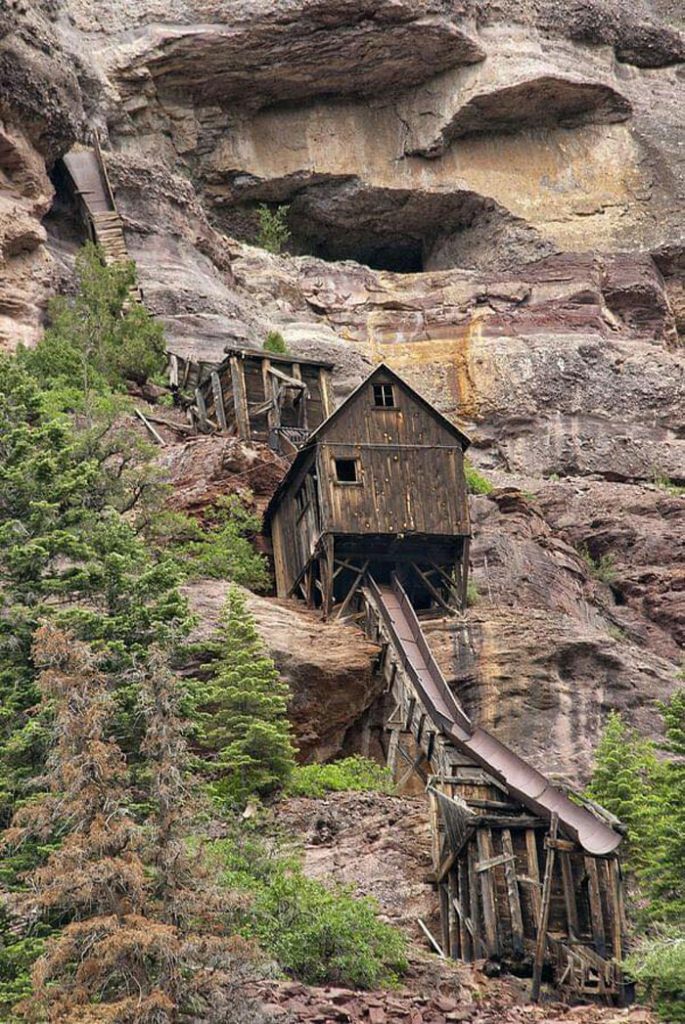
There was a gold rush in Colorado between 1858 and 1859. Numerous mineral resources were discovered all across the Rocky Mountains in a matter of years. The gold rush meant gold mines, so a great many of these mines were built. All of them are abandoned to this day.
Old Row House in Chicago
There are multiple explanations why the antiquated Italianate row house at 154 West Superior Street in River North stands apart. The two-story apartment, squeezed among two high-rise structures, is not only a wonderful example of Chicago architecture but has also evolved into a prominent public representation.

A representation of the shifting streetscape in Chicago’s downtown. Also, we can’t help but be reminded of the house from the movie “UP!” when we see this image. One can almost see a scout outside while a grumpy older man watches from the inside.
Rummu Prison, Estonia
The decommissioned prison camp’s remains, which used to be a terrifying stone building outside of the modest Estonian town of Rummu, now serve as a beach destination. The Soviet Union had already built the facility in the 1940s. It was constructed on the edge of a limestone quarry.
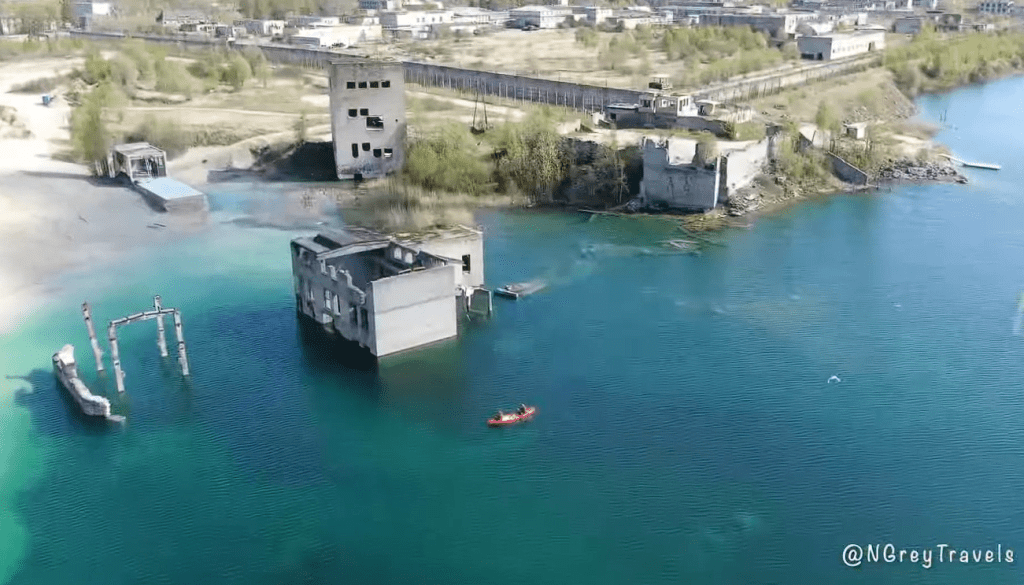
That’s where the prisoners were made to work. The prison’s allegedly impregnable fortifications just weren’t meant to stand forever. The Soviets left Estonia in 1991 after it won its independence. During the switchover, the quarry and the prison were left deserted.
Tree trunk carved into a throne, England
Chris Raper, a freelance tree consultant, requested Andy Levy, a past Kirkbie Kendal School pupil, to create this artwork. The engravings are reportedly related to the Parr family (Kendal was the home of Catherine Parr, one of Henry VIII’s many wives).

The sculpture is situated at the top of the suitably titled Parr Street in a park close to the castle. It would have been an excellent idea to include the castle here on this, it being an abandoned ruin—an absolutely brilliant piece of work by Chris.
Rocca Calascio, Italy
At 1460 meters above sea level, the Rocca Calascio fortification is one of Italy’s highest fortresses and offers a commanding view over the Navelli plain as well as Tirino valley. It’s really obvious that this is an extremely advantageous location from a tactical perspective.
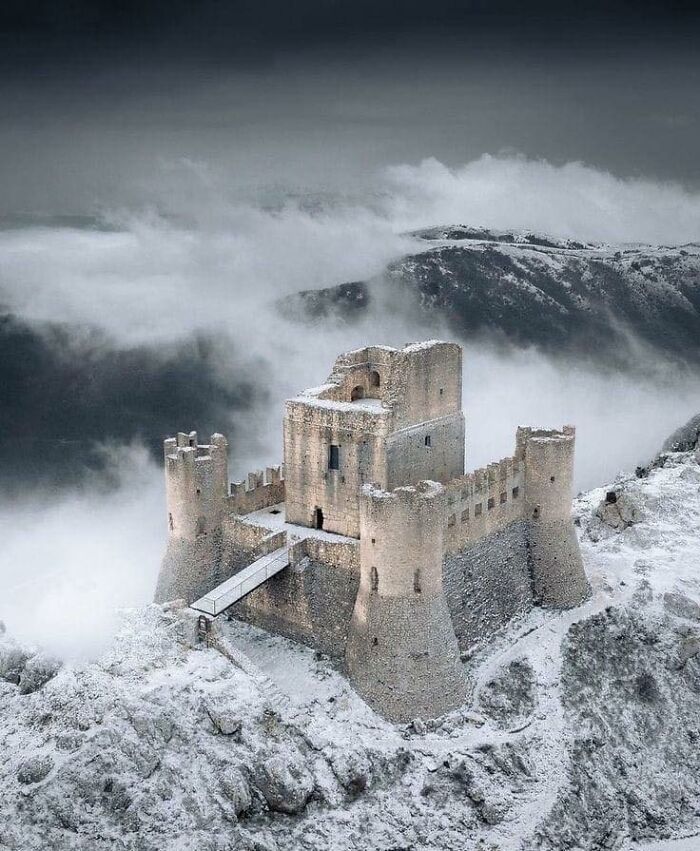
This structure was designed for military use. This fact is defined mostly by the ability from which it succeeds in merging with the unyielding adjacent region, of which it makes good use. It seems like a good place to hide out and raise an army.
Kolyuchin Island Polar bears by Dmitry Koch
A little Chukchi community named Kolyuchino used to be located in Kolyuchin. This tiny island has largely been deserted, driven by the fall of the Soviet Union, and thus is known best for the arctic meteorological station that has been closed since 1992.
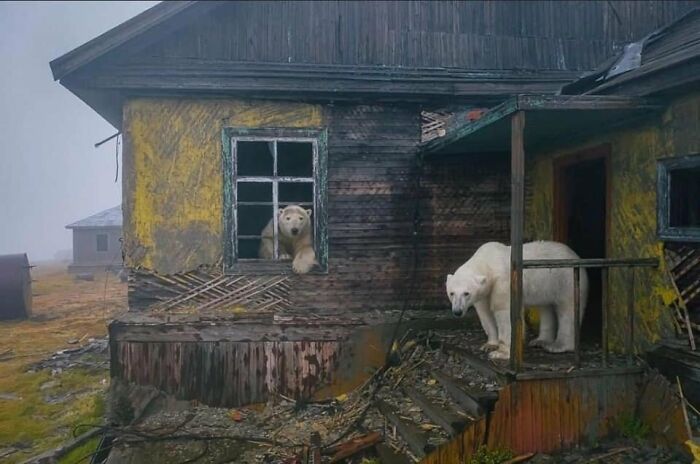
Only decaying buildings and a ghost village where Soviet scientists once lived are present. To everyone’s surprise, more than 20 polar bears have since made it their home. The photographer used drones to capture the bears. It’s no wonder he was able to take such impressive photos!
Höfn, Iceland
What appears to be a real, beautifully intact Viking settlement on Iceland’s eastern seaboard is actually a reconstruction that was made in 2010 for only a movie that was never made. It is located close to Höfn. Obviously, the place is not genuine.
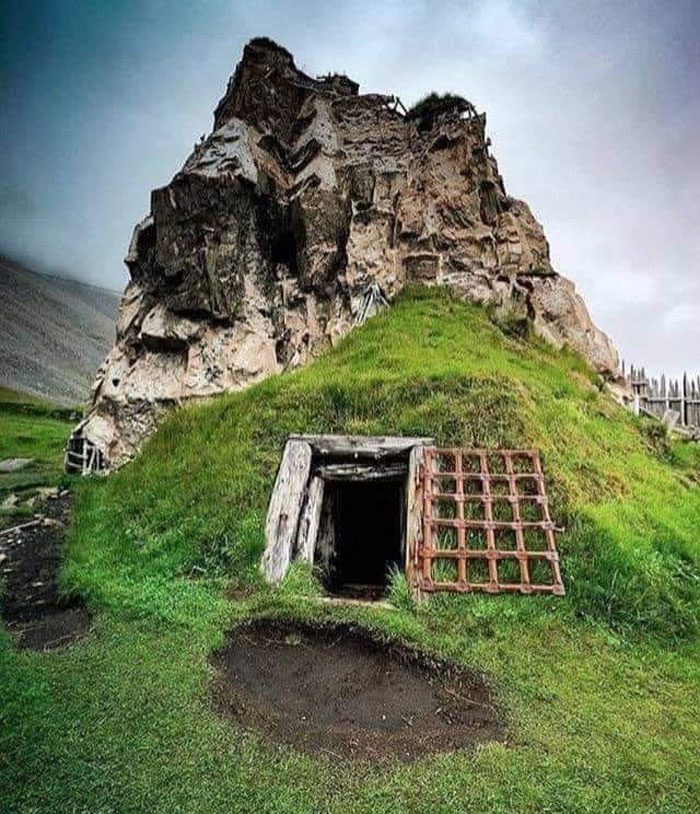
But it was painstakingly modeled after well-known Viking settlements and served as a visible reflection of Iceland’s Viking past. We can really imagine the movie, “The Northman,” being filmed here. It’s like we can almost hear the frenzied yelling of the Viking berserkers!
Hashima Island, Japan
Hashima Island, which was previously the epicenter of submerged coal mining, served as a stark illustration of Japan’s quick industrialization. Hashima served as a mining station from 1887 until 1974 and was also referred to as Gunkanjima (Battleship Island) due to its similarity to a Japanese battleship.
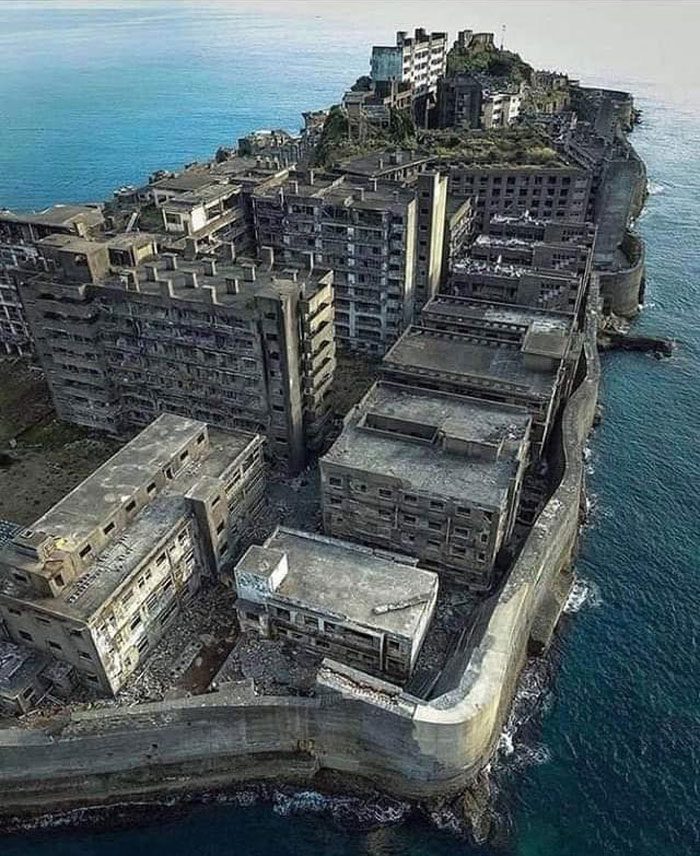
The mines closed, and the workers left as soon as the share of coal started to run out and petroleum began to replace coal. But individuals who were drawn to the unaltered historic ruins were drawn to the decaying island.
Thridrangaviti Lighthouse, Iceland
The word thridrangaviti means “three rock pillars” in Icelandic. It was a difficult effort to construct the isolated lighthouse before the outbreak of World War II. That is because helicopters weren’t in use at the time the building started in 1938.
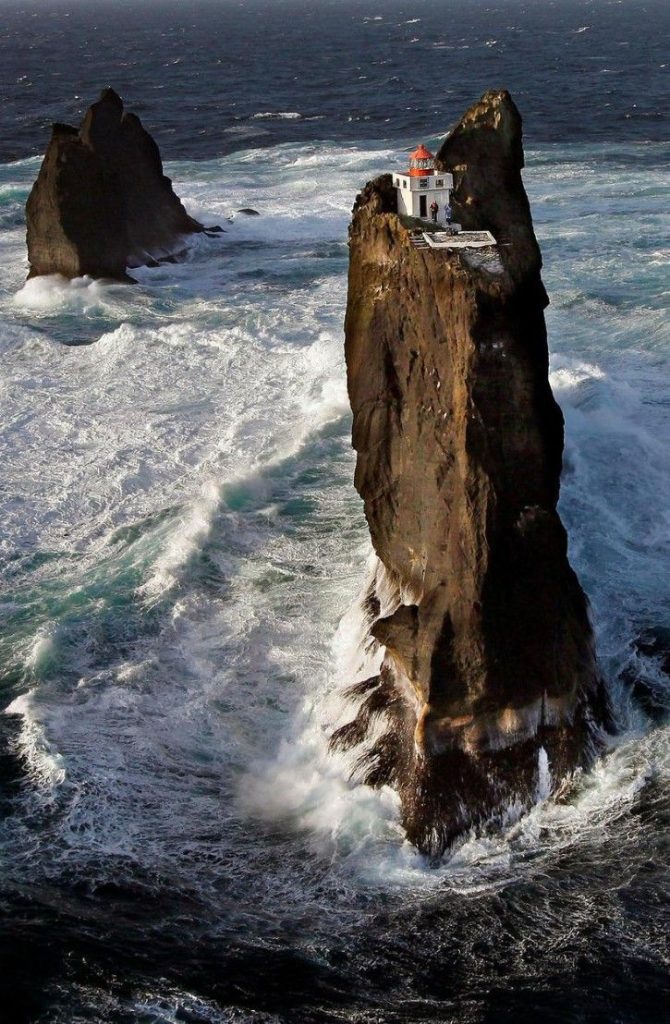
Workers ascended the cliffs while manually building the foundation. Insurmountable challenges were encountered in building this. The thriller “Why Did You Lie?” was inspired by this stunning location. Looking at the places Iceland has to offer, it’s no wonder the Vikings were so tough!
